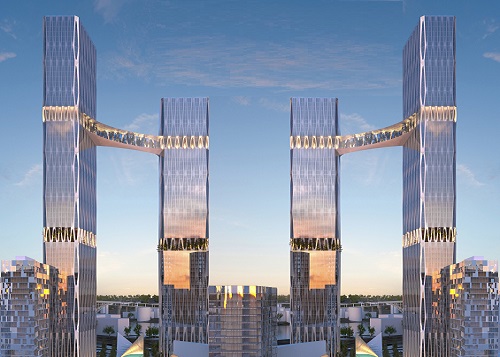


23 Dec
Nano aluminum composite panels (ACM panels) are among the newest building materials available in the market, with various advantages. Currently, nanotechnology is creating an industrial revolution noticeable in all aspects of the modern life system. Manufacturers started applying this technology to aluminum composite panels and other construction materials to solve their drawbacks and grow their usage in current architectural projects. The nano-aluminum composite panel features all the previous advantages of the ACM panel, such as anti-scaling, durability, functionality, anti-corrosion, etc.
The traditional aluminum composite panels (ACM panels) are still one of the materials that are commonly used for various structures, products, and building claddings. The construction industry highly welcomes materials such as ACP materials due to their flexibility, versatility, lightweight, and other beneficial characteristics. However, constructions with aluminum composite panel cladding systems face numerous limitations and sensitivities. Cleaning and maintaining the building’s facade is an essential task for both low-rise and high-rise facilities. Thus, the building facade and its clean appearance involve maintenance and the facility’s value as a whole. Moreover, this becomes more crucial for larger and polluted cities.
Nano ACM panels have come to solve the cleaning and maintaining problem. The technology allows cladding systems to clean the aluminum surfaces of the facade on their own without requiring any particular chemical or unique methods.
The water droplets on the plant leaves or the ones on a greasy surface are generally spherical, and they are always separated from the surface. This natural event means that the surface is probably dry, and water molecules are attached to form the spheres. This happens due to the physical properties of any substance. Thus, science has divided surfaces into two general classifications, which are hydrophobic and hydrophilic.
The hydrophilicity of a substance’s surface means that the molecules of a particular amount of water tend to depress the area. Thus, water molecules form a narrow-angle or say the droplets’ height is low. In contrast with hydrophilicity, water particles on a hydrophobic surface tend to bond to each other rather than the material. In this case, droplets form a prominent sphere with a broader angle, and the height of the particular amount of water is higher. Additionally, hydrophilic surfaces feature high energy, and in contrast, hydrophobic substances have low energy surfaces. However, with the knowledge of nanotechnology, the physical properties of any surface can be transformed into a selective character. Thus, with the growth of technology, it is possible to create hydrophilic surfaces and change their properties.
Textured surfaces made in another nanoscale feature a greater distance between the air and molecules. This can cause hydrophilicity decrement on the surface, and water droplets will stick to more together than the desired surface. The same can happen with nano aluminum composite panels as water drops do not spread on the surface of the ACM panel and stick to each other. As water drops move on the cladding system, they will absorb the dust or strain and pass through the building facade. Thus, the nano aluminum composite panel’s surface gets cleaned thoroughly without extra cleaning chemicals applied. Additionally, the nano-coating existing on these cladding systems makes it difficult for the dirt and dust to adhere to the ACP surface, resulting in solid stains on the building facade execution.
It is essential to mention that Aluminum composite panels are low maintenance materials naturally, and even with nanotechnology, it is possible to clean them with detergents and cleaning tools. Aluminum sidings and ACM panels cladding systems do not require special equipment for cleaning. The crucial thing about nano cladding materials is that it makes the cleaning process much easier for high-rise buildings.
As nano aluminum composite panels have auto cleaning, they bring essential benefits for the building’s owner, which are as followed:
Homeowners can save money and energy by using nan ACM panels.
The building’s facade will last longer than other cladding materials.
The construction and its facade maintain its appearance, resulting in preserving the building’s value, prestige, and overall status.
Like any other composite material, Nano ACM panels consist of various layers, including the core or central layer, the front, rear cladding sections, and finally, the coating surfaces. The modern tech coating is applied to the last layer of the products. The final layer serves the cladding systems as a protector against different elements, including:
Urban pollution
Oil
Wearing over time
Sun rays
Harsh weather conditions
Acid rains
Alkaline substances